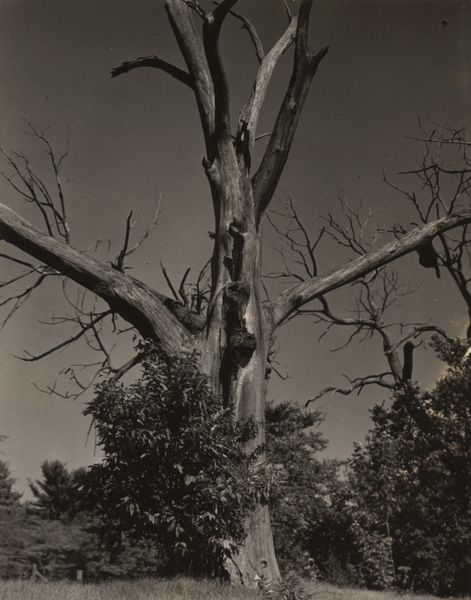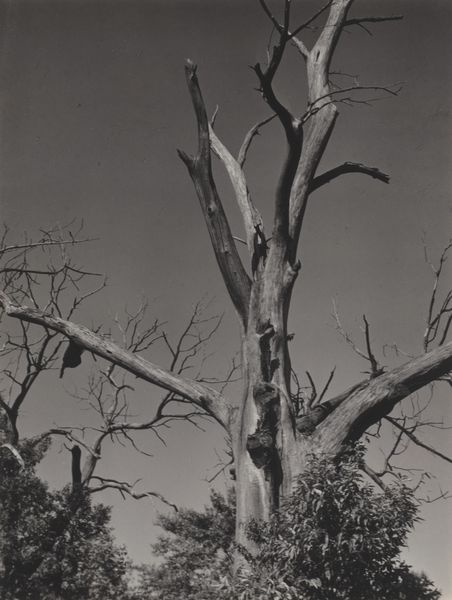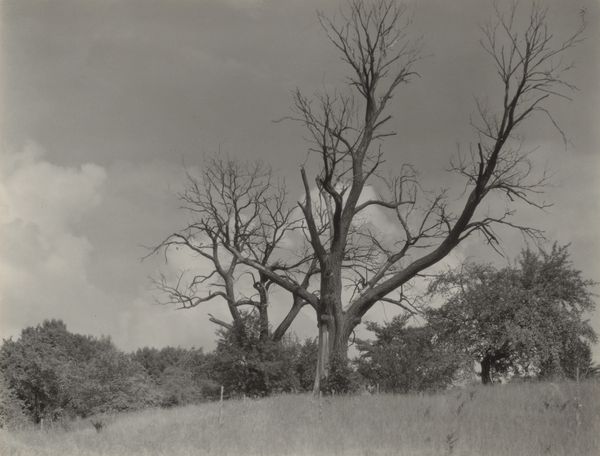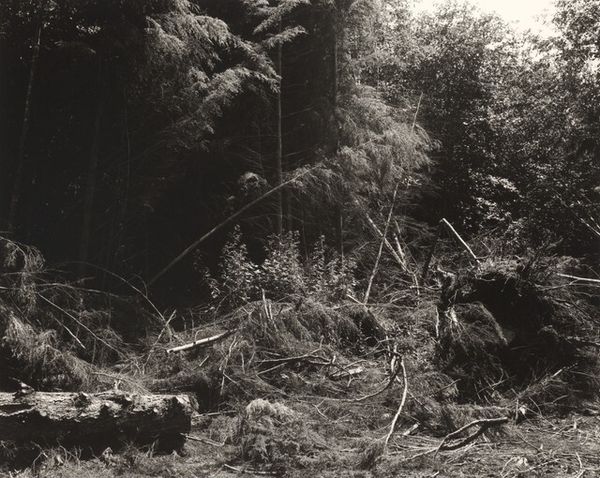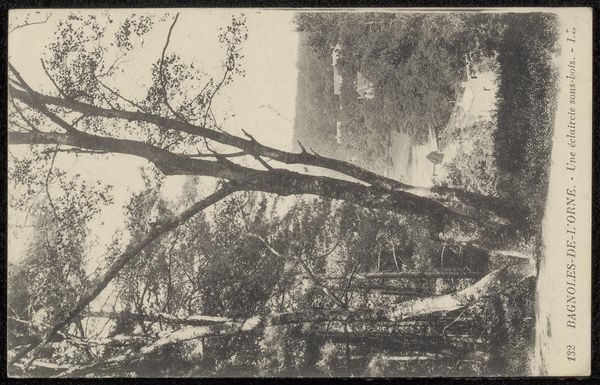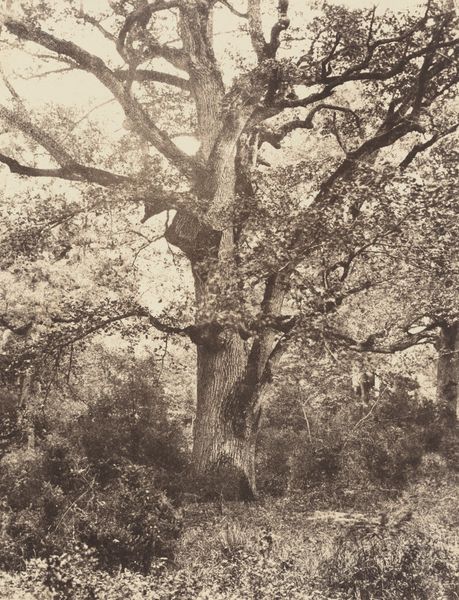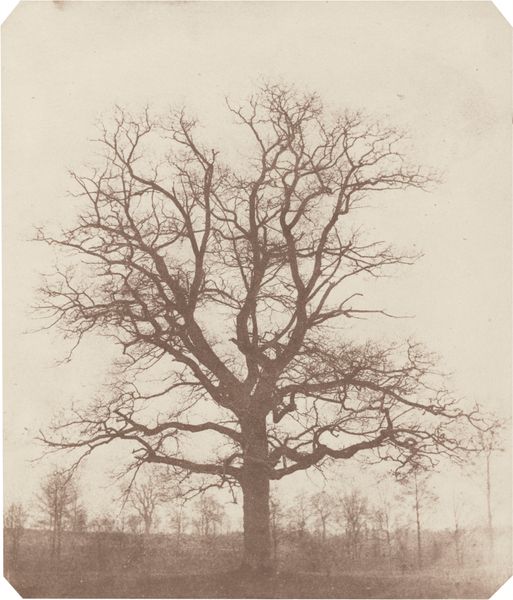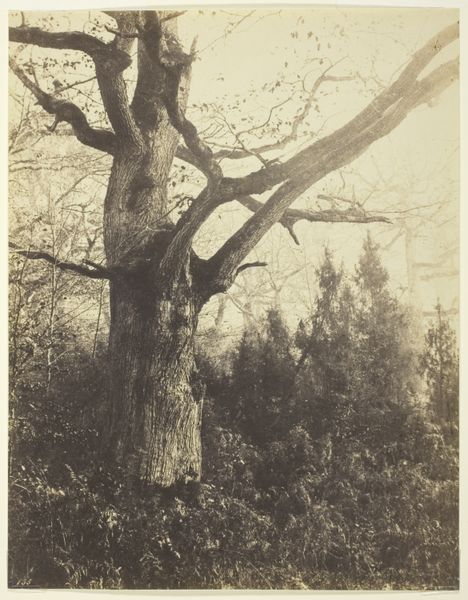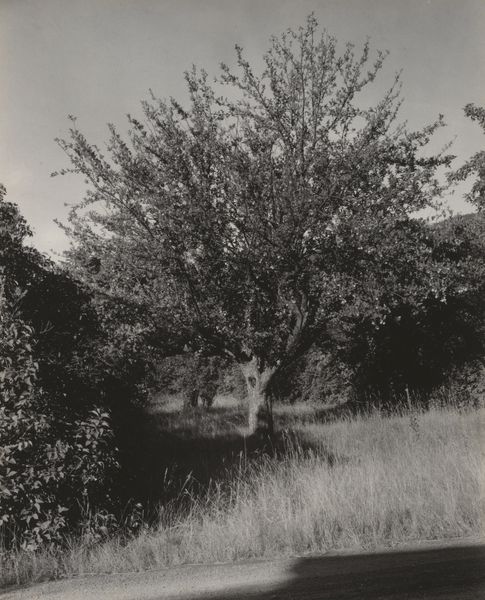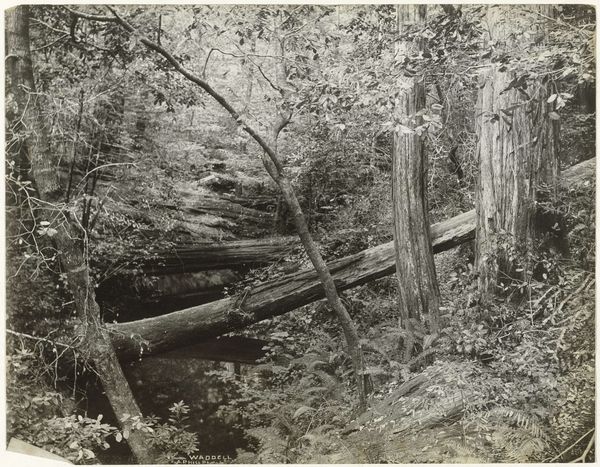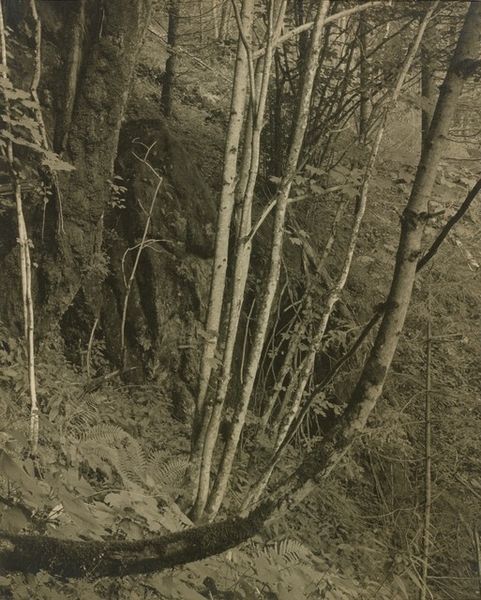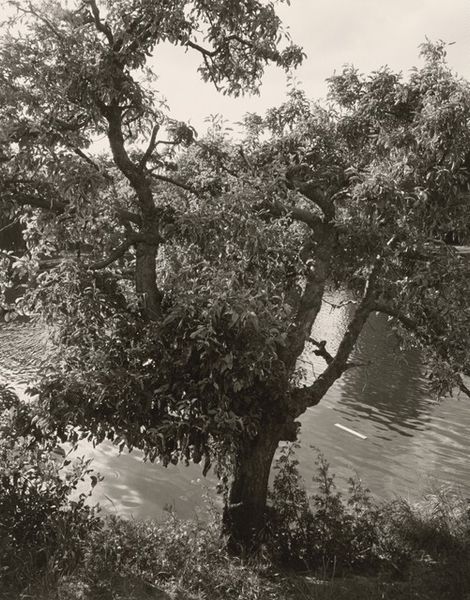
Dimensions: sheet (trimmed to image): 9.3 × 11.8 cm (3 11/16 × 4 5/8 in.) mount: 33 × 26.9 cm (13 × 10 9/16 in.)
Copyright: National Gallery of Art: CC0 1.0
Editor: We’re looking at Alfred Stieglitz’s "Dead Chestnut Tree," a gelatin-silver print from around 1937. There's something very stark about the composition. It's a skeletal tree set against this softer backdrop. How do you interpret this work? Curator: Well, consider the era. This was taken during the Depression, a time of immense social upheaval and loss. The dead chestnut tree, ravaged perhaps by blight – a very real agricultural crisis at the time – becomes a potent symbol. Think about it: what does a dead tree signify? Editor: Decay, loss, the end of something. Curator: Precisely. But Stieglitz wasn’t merely documenting decay. He was deeply engaged with modernist ideas and saw photography as a means of personal expression. The image embodies this dialectic between devastation and resilience, between the objective reality of a dying tree and the subjective, emotional response it evokes. Editor: So, it's not just a tree; it's a symbol of something bigger. Curator: Exactly. And whose story does it tell? Is it about the fall of capitalism? A personal elegy? It invites us to consider the tree’s vulnerability, relating to themes of class, gender, and perhaps even his own aging body within a changing social landscape. It becomes about power structures. Do you see the faint hints of other trees, lush growth? Editor: Now that you mention it, yes. They make the dead tree stand out even more. Curator: They are complicit in its tragedy. The death of the Chestnut, metaphorically representing social and historical ills, is as significant now as it was then, in a new light. What do we preserve and what do we discard as a society? Editor: This makes me consider my relationship to trees as living organisms; not static things to enjoy but also subject to life cycles, historical context and the impacts of cultural shifts. Curator: Precisely. Photography allows for those considerations. Editor: Thank you!
Comments
No comments
Be the first to comment and join the conversation on the ultimate creative platform.
